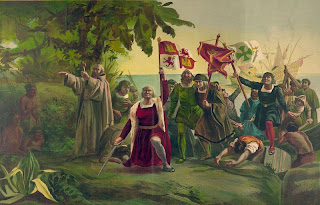Saint Edward the Confessor: Piety and Grandeur of Soul
by VP
Posted on Monday October 13, 2025 at 01:00AM in Saints

King Edward the Confessor, holding a ring and a sceptre. Engraving by J. Smith, 1732.
Wellcome Collection. Public Domain Mark. Source: Wellcome Collection.
"PIETY AND GRANDEUR OF SOUL.-In the estimation of worldlings the word "piety" denotes littleness of mind; but this betokens littleness of judgment on their part, for religion shows forth the contrary by illustrious examples. No man was ever more pious, mortified, chaste, and charitable than St. Edward, king of England; but side by side with these purely Christian qualities he displayed a grandeur of soul worthy of the throne. He established a wisely-planned code, which still forms the groundwork of public law in England, and organized an administration so complete that the nation seemed to govern itself as of its own free will; and he proved himself fully able to repel his enemies by armed force whenever it was found needful to engage in war. His subjects loved him like a father. Providence seemed to have singled him out to repair the disasters resulting from forty years of invasion, and to restore his country. He died in 1066, after having founded the abbey of Westminster. "Weep not," he said to his queen Editha; "I am not about to die, but am beginning to live eternally."
MORAL REFLECTION.-"The fear of the Lord is the beginning of wisdom," and thereby "a wise man will increase his wisdom."(Prov. i. 5, 7.) Pictorial half hours with the saints. By Rev. Fr. Auguste François Lecanu
The First Sanctuary in the New World
by VP
Posted on Monday October 13, 2025 at 01:00AM in From the Past

First landing of Columbus on the shores of the New World: at San Salvador, W.I., Oct. 12th 1492
"Catholics all the world over should take a pride in sharing in the glory and honors of the Columbian Celebration; because where American civilization was first planted by Columbus, in 1493, the Catholic Church reared its first altar on this soil four hundred years ago. The story of this church is the golden chain that links the landing of the Spanish cavaliers with the great achievements of 1893. Christianity and civilization were born in the same cradle and at the same moment, in the western hemisphere.
It is a fact not often commented upon in American history, that the first house built by Columbus in the New World was a Catholic church. Its remains still exist; and it is the story of the discovery of the ruins of this first church that we are specially concerned with in this article. The story is not long. It was in the fall of 1493 that Columbus set sail on his second voyage of discovery, with seventeen ships and fifteen hundred men to establish his first permanent settlement. Horses and domestic animals of all kinds, every sort of seed and agricultural implement, were gathered on board. Among the crew were cavaliers, hidalgos, soldiers, sailors, and artisans. A group of twelve ecclesiastics under a Benedictine monk, Father Bernard Boyle, who had also been named Vicar-Apostolic of the New World, accompanied the expedition. A prosperous voyage brought them off the north coast of the island of Santo Domingo about the latter part of November, 1493.
When the admiral prepared to make his first settlement, he nominated a commission composed of two engineers, an architect, and a ship-builder, under the presidency of Melchor Maldonado, to make a topographical survey, and report to him the most suitable site for a city. After a careful examination they reported a place about eight miles from where Cape Isabella now is. It was provided with an excellent port, and was near two rivers, watering a soil that was exceedingly fertile. A short distance away were stones fit for building. The plateau on which they proposed to locate was described at length by Dr. Chanca,the physician of the fleet, in a letter to the authorities of Seville which is still extant.
Says the chronicler: "In his estimation, the service of God surpassing all other considerations, the first edifice that was erected should be the church. It was pushed with such activity that, on the sixth of January, 1494, the anniversary of the entrance of the sovereigns into Granada, High Mass was solemnly celebrated in it by the Vicar-Apostolic, assisted by Father Juan Perez de Marchena and the twelve religious who accompanied Father Boyl" (sic)." Catholic World, Volume 57 Paulist Fathers, 1893
